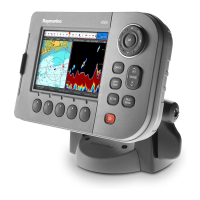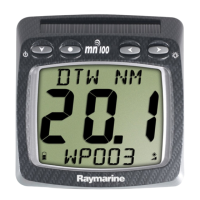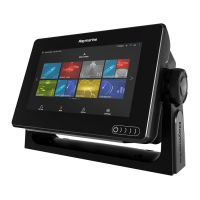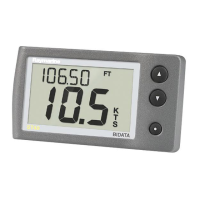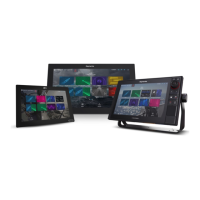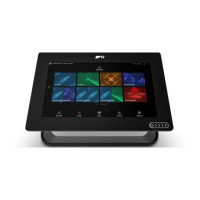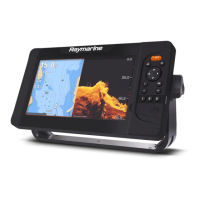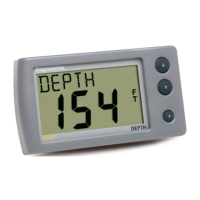Do you have a question about the Raymarine A Series A50 and is the answer not in the manual?
General warnings and cautions for product usage, installation, and safety.
Description of available applications like Chartplotter and Fishfinder.
Guide for initial setup and operation of the A-Series Display.
Explains the physical controls and their functions on the A-Series unit.
Details basic operations like powering on/off, cursor movement, panning, and zooming.
How to select and view different applications and page sets.
Defines waypoints and their representation on chart and fishfinder screens.
Details the creation, navigation, and editing of waypoints.
How to view and modify details of created waypoints.
Steps for deleting waypoints from the system.
How to organize waypoints into groups for easier management.
Important safety warnings and prerequisites for using the chart application.
Describes a typical chart view and its components.
Simplest navigation method using cursor or waypoint.
Steps for building and saving routes composed of waypoints.
How to start, stop, and manage following a defined route.
Procedures for modifying existing routes, such as changing course or name.
Explains the CDI for monitoring progress towards a waypoint.
How to record, save, and convert tracks into routes.
Tools for measuring distances, ranges, and bearings on the chart.
Configuration options for chart display, vectors, and track recording.
Safety warnings and system requirements for the 3D chart application.
How to use the 3D chart, including navigation features and controls.
Benefits of viewing standard and 3D charts side-by-side.
Explains the principle of acoustic sounding and echo interpretation.
Using preset configurations for optimal fishfinder operation.
Adjusting the depth range for the fishfinder screen.
Configuring settings for transducers, frequencies, and screen appearance.
Accessing and viewing various weather reports like tropical statements and marine warnings.
How to start and use the Sirius radio system, including tuning and controls.
Setting up password protection for selected channels.
Setting up safe zones around the vessel for collision avoidance alarms.
Monitoring engine data and associated resources.
How to customize data panels by renaming, splitting, merging, and selecting data cells.
Creating and editing custom page sets for application layouts.
Various system-wide settings including position mode, variation, and language.
Settings for system integration and accessing the alarm setup menu.
Setting up and using password protection for waypoint and route databases.
Safety warnings regarding high voltages and service procedures.
Procedures for resetting system settings or settings and data.
Guidance on identifying and resolving common faults.
| Touchscreen | Yes |
|---|---|
| Waterproof Rating | IPX6 |
| Backlight | LED |
| Display Size | 5 inches |
| Display Type | LCD |
| GPS | Yes |
